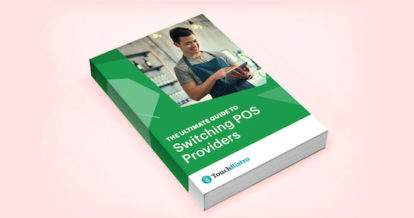Change is good. Switching POS systems is even better.
Not all relationships are meant to last forever – and your relationship with your restaurant’s POS system might be one of them. If you’ve weathered connectivity issues, shelled out for expensive repairs, and spent hours on hold with customer support, it may be time to say goodbye and begin the process of switching POS systems.
But before changing POS systems, you probably have a lot of questions. How do you shop around when your business is already set up with your current system? When is it time to start looking for a new solution? Will switching POS systems impact your business? After all, your POS is responsible for managing many aspects of your business. From migrating your menu to purchasing new hardware, a little planning can make the transition much smoother.
That’s where this guide to changing POS systems comes in. Whether you’re moving from an outdated POS system or another cloud-based software, we’ll cover everything you need to know about switching POS systems.
Read this excerpt of the guide to learn when it’s time to make a change, then download the free Ultimate Guide to Switching POS Systems for even more details.
10 Signs It’s Time to Switch POS Systems
Whether you’re currently using a legacy or a cloud-based system, there are usually a few issues that will cause you to start considering a switch. Here are 10 signs that your current POS system just isn’t cutting it:
1. It’s complicated to use
If your POS makes basic tasks (like placing orders and splitting checks) a major hassle, it’s time to look for a more user-friendly system. A good example of a user-friendly system is a cloud-based POS system, despite it being one of the more common cloud misconceptions.
2. It slows down service
A POS that lags and slows down service can ruin a diner’s experience and make things tougher for your whole team.
3. It can’t be accessed remotely
If your POS data can only be accessed on site, you aren’t able to make important business decisions or changes when you’re off site.
4. It requires a multi-year contract
If your provider requires you to sign a multi-year contract to continue using their system, you won’t be able to change your mind if your business needs change.
5. It’s too expensive
A POS that requires pricey hardware or maintenance cuts into your bottom line.
6. It has limited integrations
If your POS can’t be integrated with third-party applications for functionalities like accounting, inventory tracking, and employee scheduling, you’ll have to juggle multiple tools instead of one central tool.
7. It can’t scale with your business
If your current POS has limited capabilities, it will hinder your ability to expand and grow your business.
8. It’s a security risk
If your POS has an outdated security system, it puts your data and your customer’s data at risk.
9. It can’t take payments offline
A POS system with no offline mode means that you can’t complete sales if your Internet goes down – a major problem for busy restaurants.
10. Its customer support is lacking
A POS system with limited support hours or unhelpful representatives means precious time and money is wasted when issues pop up – and you can’t afford to be on hold for a long time when you’re having issues at your restaurant.
This excerpt is just the tip of the iceberg of what you’ll get when you download the free Ultimate Guide to Switching POS Systems. Get your free copy today!




